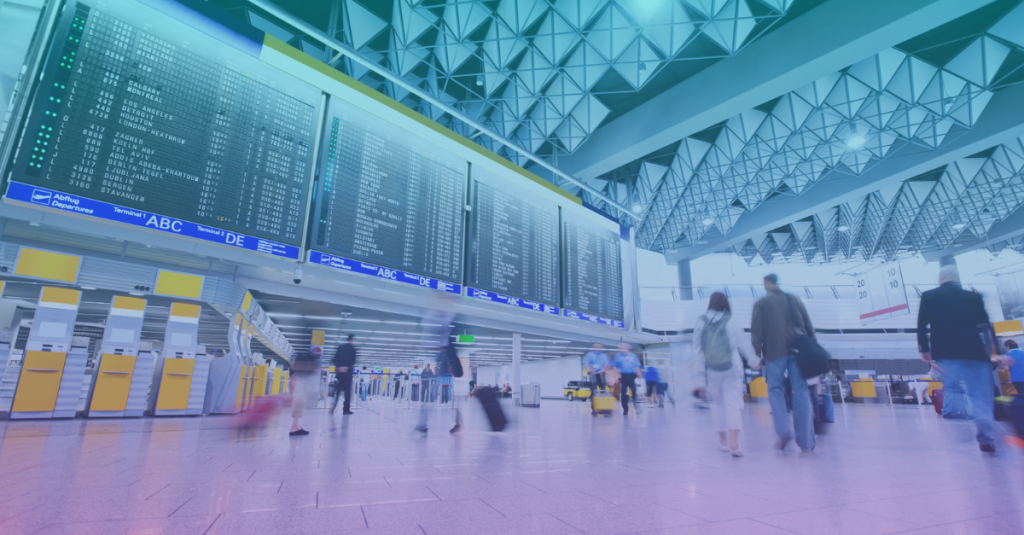Articles
Understanding high customer expectations

Understanding high customer expectations
In today’s rapidly evolving travel and hospitality industry, delivering a connected guest experience has become a top priority for businesses. Studies and reports have highlighted the increasing demand for personalization and seamless interactions from customers, so it is clear that connectivity and data-driven insights play a crucial role in shaping the future of the industry. To meet these expectations and eliminate friction, businesses must ensure that their backend systems and customer-facing platforms work harmoniously, providing reliable, quick, and simplified experiences. This article explores the significance of a connected guest experience and the benefits it brings to both businesses and customers.
According to a recent study by Oregon State University, quoted by USA Today newspaper late last year, some 91% of hospitality workers have recently had to deal with customers who really believe they deserve special privileges. Similarly, a report from Hilton, `The 2023 Traveler: Emerging Trends that are Innovating the Travel Experience,’ found that some 86% of those surveyed indicated they will be looking for more personalisation during their 2023 travel experiences and interactions.
‘…the future of the industry is all about delivering a connected guest experience, but this requires having a connected business, where data and insights flow across organisations to support real-time decisions and actions…’
These are just two of the indicators that the future of the industry is all about delivering a connected guest experience, but this requires having a connected business, where data and insights flow across organisations to support real-time decisions and actions. This can also be thought about in terms of reducing and eliminating `friction.’ The back-end systems and the customer-facing systems throughout the value chain – at your own company and throughout the partner organisations in your ecosystem – must work well, reliably, quickly and simply at all times to deliver positive experiences.
A March 2023 report from the US Federal Highway Administration, “Sharing and Using Connected Device Data to Improve Traveller Safety and Traffic Management,” explains that connectivity features and the ability to exchange electronic messages with other devices in real-time is fundamental to the goals of improving both traveller safety and traveller experience. “Information derived from electronic messages that travellers, vehicles, and other sources generate… can enhance the performance of these systems while providing information that could support new services for travellers using a connected mobile device.”
Sabre, a software and technology company that powers much of the global travel industry, recently helped Finnair to roll out its New Distribution Capability (NDC) content globally in multiple waves, with the first wave including 34 countries. Sabre-connected agencies and developer partners can now shop, book and service Finnair’s NDC content by using the Sabre Offer and Order APIs, Sabre Red 360, and GetThere. “As travel recovers, travel companies’ interest in realising a future state that is more personalised, scalable, and flexible has grown,” noted Kathy Morgan, vice president of channel delivery at Sabre Travel Solutions.
Another example is the adoption of a technology called Whistle by C&L Hospitality, an award-winning hotel management company. C&L uses the system across two hotel brands to spot and address “unhappy guests” through texts to staff and integration with property management systems. Whether a small matter of a broken coffee maker or resolving a policy issue, the payback, according to a case study published by Whistle, has been a reduction in negative online reviews.
Obviously, the cost of not having a connected guest experience and a connected business is high and growing. Most obviously, it risks disappointing and potentially losing end customers. It can also risk the strength and profitability of relations between and among partners. And it typically raises costs and adds friction throughout the travel and hospitality value chain.
While the new connected guest experience might look superficially like the “old” customer experience, it is not. An individual may still make travel reservations, stay at a destination, and return home, but at every step, they are getting more and better information that allows them to make more and better choices and feel confidence and engagement not previously possible.
The mirror image of that is that the ecosystem of travel and hospitality enterprises must provide directly relevant information (and indirectly relevant information) in a manner that invites smooth interaction. No glitchy websites or wonky apps, no payment problems, no experiences that will annoy or frustrate a consumer – just value added that encourages and strengthens an economic relationship.
Success depends on integration across functional areas, across the organisation, and beyond.
There are many challenges to creating a connected guest experience. Those challenges start with a wide range of decision points regarding when, where, and how to travel. Tools allow and encourage long-term planning but must also support sudden and rapid changes in the itinerary. All of the choices and actions typically involve separate silos consisting of specific travel platforms, individual corporate organisations, and even small-scale providers (think about an Uber or Lyft driver or a neighbourhood cafe). Gaining access to most or all of these siloes directly is difficult, but other sources of information can help illuminate the customer in their figurative and literal journey.
Companies seeking to engage the connected traveller or guest should focus on what they do well but also try to understand and collect data and insight before, during and after the customer experience (travel using an airline, a car or train, cruise on a ship, stay at a hotel, etc.). Much can be learned from modest slices of data, and organisations should be poised to seize opportunities to acquire even more data, including user-generated data from the edge (devices).
Creating a connected guest experience is no longer a luxury but a requirement for travel and hospitality organisations. Failing to deliver a seamless and personalised experience not only risks disappointing and losing customers but also strains relationships with partners and adds unnecessary costs and friction throughout the value chain. The new connected guest experience goes beyond the traditional customer journey, empowering individuals with more information and choices at every step. It demands a well-integrated ecosystem of travel and hospitality providers that can deliver relevant information seamlessly, fostering confident and engaging interactions. Success in this new landscape hinges on the integration of functional areas, organisational units, and external partners. By leveraging data and insights before, during, and after the customer experience, companies can unlock valuable opportunities to better understand their customers and enhance their offerings. Embracing the connected guest experience is key to thriving in the ever-evolving travel and hospitality industry.
Read the rest of the creating a connected guest experience series:
#1 – An introduction to creating a connected guest experience
#4 – A vision of the new connected guest experience
#5 – 6 Steps to getting started with creating a connected guest experience
Author
Alex Green
Marketing Manager

Subscribe to The Hyper-Insights Newsletter
Discover the benefits of a Hyper-connected business with infinite possibilities. Bringing the latest news and tips to your inbox from our expert team.






